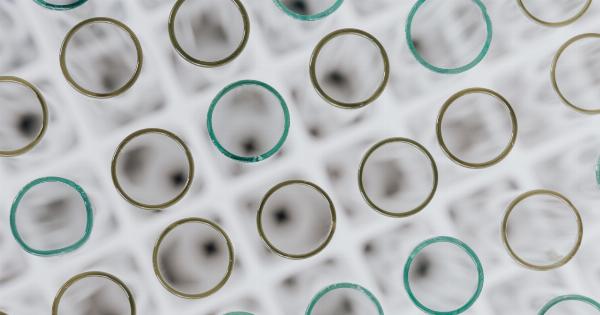A brain aneurysm is a bulge or ballooning in the wall of a blood vessel in the brain. It occurs when the weakened area of a blood vessel expands and creates a risk of rupture.
Brain aneurysms are dangerous and can lead to potentially life-threatening conditions such as hemorrhagic strokes. However, with advancements in medical technology, there are now several effective techniques available for treating brain aneurysms.
1. Endovascular Coiling
Endovascular coiling is a minimally invasive technique used to treat brain aneurysms. In this procedure, a catheter is inserted into an artery, usually in the groin, and guided to the site of the aneurysm in the brain.
Once in place, tiny platinum coils are inserted through the catheter and into the aneurysm. These coils promote blood clotting and effectively seal off the aneurysm, preventing further expansion or rupture.
2. Flow Diverters
Flow diverters are another innovative treatment option for brain aneurysms. These devices are designed to redirect blood flow away from the aneurysm, reducing the risk of rupture.
A flow diverter is a stent-like device that is placed across the neck of the aneurysm. It creates a barrier that prevents blood flow into the aneurysm, allowing the weakened blood vessel wall to heal and reducing the risk of rupture.
3. Microsurgical Clipping
Microsurgical clipping is a traditional technique used to treat brain aneurysms. It involves open surgery, where a small metal clip is placed around the neck of the aneurysm to halt blood flow and prevent rupture.
While it is a more invasive procedure compared to endovascular techniques, microsurgical clipping remains an effective treatment option for certain types of aneurysms.
4. Coiling with Balloon-Assisted Technique
In some cases, coiling with balloon-assisted technique may be used to treat complex aneurysms. This technique involves temporarily blocking the normal blood flow with a balloon catheter placed at the neck of the aneurysm.
The catheter is then used to guide and safely deliver the coils in the aneurysm. The balloon-assisted technique helps to ensure that the coils remain securely within the aneurysm, reducing the risk of complications.
5. Pipeline Embolization Device
The pipeline embolization device (PED) is a newer treatment option for wide-necked brain aneurysms. It is a flexible mesh tube that is placed across the aneurysm neck, diverting the blood flow away from the aneurysm.
The PED promotes the formation of a stable blood clot within the aneurysm, effectively sealing it off. This technique has shown promising results in treating complex aneurysms that may not be suitable for other treatment options.
6. Surgical Clipping with Bypass
For large and complex aneurysms, surgical clipping with bypass may be necessary. In this procedure, the blood flow is rerouted from the affected blood vessel to a healthy blood vessel using a bypass graft.
The aneurysm is then clipped to prevent further expansion or rupture. This technique requires a high level of surgical expertise and is generally reserved for cases where other treatment options are not feasible.
7. Liquid Embolic Agents
Liquid embolic agents are used as an alternative to platinum coils in certain aneurysm cases. These agents are injected directly into the aneurysm, where they solidify and form a clot.
The clot blocks blood flow into the aneurysm, effectively sealing it off. Liquid embolic agents offer advantages such as complete filling of irregularly shaped aneurysms and the ability to reach difficult-to-access areas, providing an effective treatment option for specific aneurysm types.
8. Gamma Knife Radiosurgery
Gamma Knife radiosurgery is a non-invasive technique for treating brain aneurysms. It uses highly focused radiation beams to target and obliterate the aneurysm.
While not a primary treatment option for aneurysms, Gamma Knife radiosurgery may be considered for patients who are not suitable candidates for open surgery or endovascular treatments.
9. Electrotherapy
Electrotherapy is a novel technique that shows promise in treating certain types of aneurysms. It involves the use of electric currents to stimulate the lining of the aneurysm, promoting healing and reinforcement of the vessel wall.
Electrotherapy is still in the experimental stage and requires further research to determine its long-term effectiveness and safety.
10. Emerging Technologies
The field of treating brain aneurysms is continually evolving, and new technologies are constantly being developed. Some emerging technologies under investigation include endovascular flow disruption devices and stem cell therapy.
These techniques aim to provide alternative or complementary treatment approaches, offering more options for patients with brain aneurysms.































